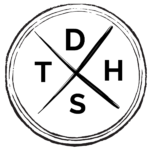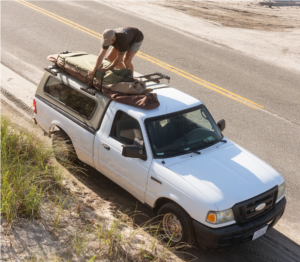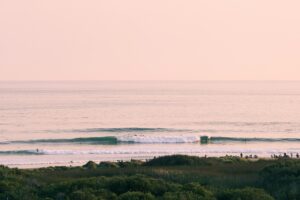As you drive into Chicama, it is the last place on earth you’d expect to find anything considered a “surf paradise” or “world’s longest wave”… quite the opposite. While your driver avoids potholes and you gaze at piles of plastic, rubble, and barren desert hills, you wonder if the place is all that.
While Northern Peru has some of the ugliest coastline in Latin America turn your attention to the Ocean, and things get interesting. When it’s on, we’re talking corduroy lines stacked to the horizon, ruler edge lefts peeling for hundreds of meters, minimal crowds, and the opportunity to ride waves for 2 minutes +. Sound like a bit of you? Here’s everything you need to know about surfing in Chicama.
Chicama Overview
- Longest wave in the world
- Rides of 2 minutes +
- Needs 4ft+ swell to get cranking
- Accommodations just down from the point
- Fun for turns, barrels rare
- Leg burning
- Long run arounds
- Strong rips
- Boat wake ruins some waves
Table of Contents
Where Is Chicama?
The place is surprisingly tricky to get to for somewhere as established on the surfing map as Chicama. Firstly, the name Chicama isn’t the name of the town itself but rather the name of the surf break.
The town itself is called Puerto Malabrigo and this is what you’ll see labelled on Google Maps. However, when traveling there, tell anyone you’re heading to “Puerto Chicama” or “Playa Chicama” and they’ll understand.
How do you get to Chicama?
By Plane
Getting to Chicama is relatively tricky, even by plane. There is no major airport close to Chicama so your best bet is to fly to Talara and either take an 8-hour bus ride south or hire a car.
There is an airport in Trujillo, but flights are in-frequent. If you were to find flights to Trujillo from elsewhere in Peru, this is by far the best (and quickest) way to get to Chicama.
*Before booking flights in Latin America, be sure to check my guide on surfboard baggage fees, to make sure you’re not paying stupid money for boards!
By Car
Because my trip to Peru was very much a budget surf trip, I skipped the rental car. However, if time is against you, and you want the fastest and most flexible way of reaching Chicama. Hire a car in Trujillo or Talara and make the drive. The roads are long and open in Peru so driving is fairly straightforward. Check out the best rental car prices here.
By Bus
Whether you’re coming from the North or South, get to Trujillo first. From the North, you’ll need to turn off at the town of Paijan to reach Puerto Malabrigo (Chicama) an hour before you get to Trujillo.
From the North
- Take a bus from Talara to Chiclayo, then another to Trujillo.
- From Trujillo, you need to get another bus (I told you it was a mission, right?) back to Paijan, a town you will have passed on the way to Trujillo, from here, take a taxi to Puerto Malabrigo.
From the South
- From the South, aim for Trujillo, and get a bus from there to Paijan and then a taxi to Puerto Malabrigo. You can find direct buses from Lima to Trujillo.
Getting to Chicama by bus sounds confusing and it can be, but for the clearest Bus times and routes, check out Bus Bud. (It’s my go-to bus booking site). You can find routes between most major cities in Peru there!
Chicama Surf Spot Info
- Tide - All Tides
- Swell Direction - S/SW
- Best Size - 4-6ft
- Wind - South (prevailing winds are always offshore in Chicama)
- Sea Floor - Sand with some rocks
- Crowd Factor - Mellow (it's incredibly long)
- Level - Intermediate to Advanced
- Local Vibe - Friendly
The Best Time of Year
Chicama receives swells year-round. However, during the Southern Hemisphere winter of May to October, large south swells march across the Pacific and up the coast of South America. These same swells, wrap around the headland and light up the points of Chicama.
Chicama Water Temperatures
In winter (April – October), the average water temperature is 18°c. I’d recommend a decent 3/2mm wetsuit for winter! In Summer, water temps climb as high as 24°c and you can surf in boardies. Air temperatures in winter hang around the 15-20°c mark, so it’s pleasant most of the time. Windy mornings can be chilly though, so pack a good jacket!
Water temps from SeaTemperature.info.
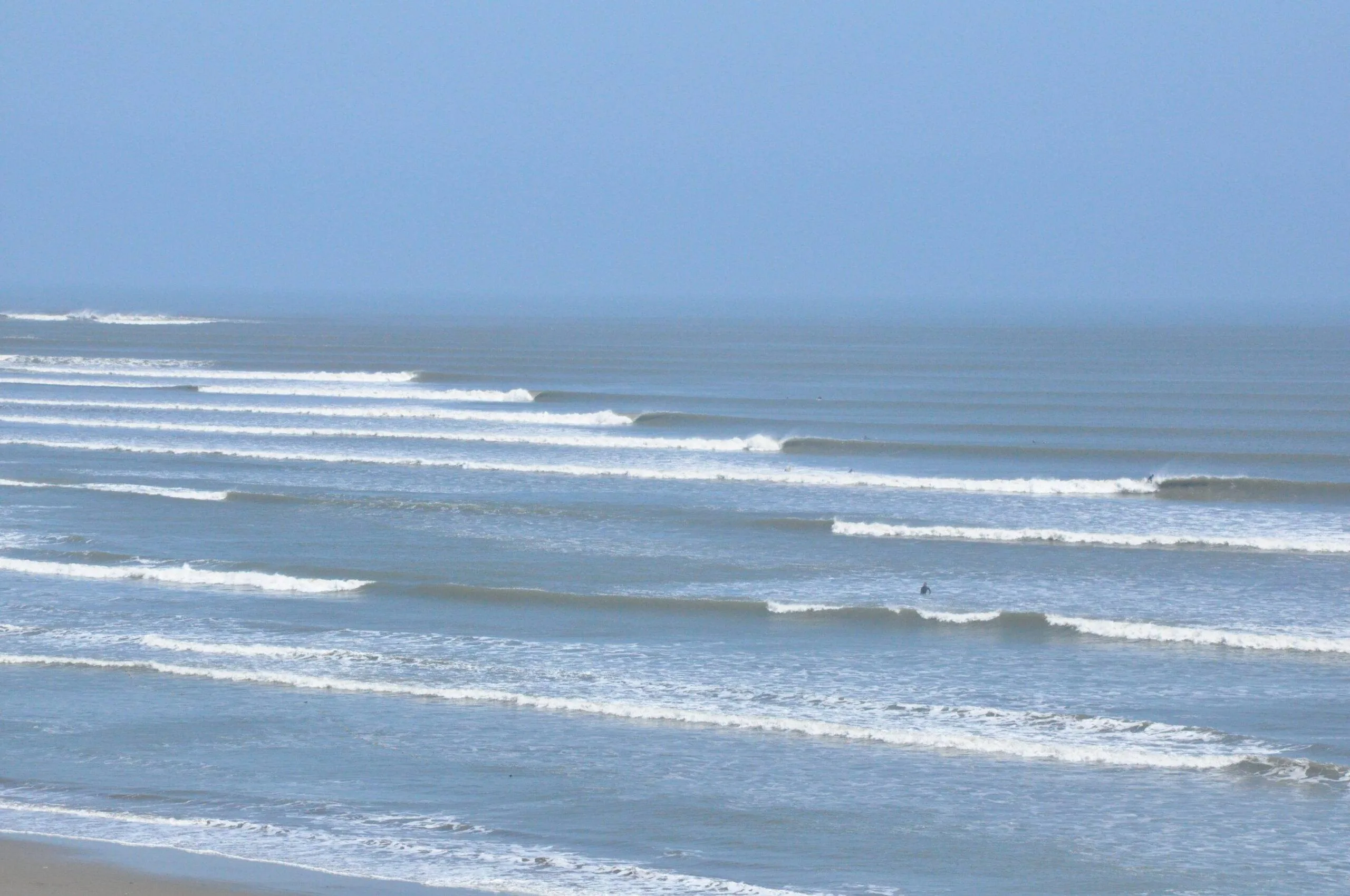
Chicama Surf Spot Breakdown
Chicama is broken down into multiple left-hand point breaks and only link up on the largest swells. That said, each section in itself is ridiculously long. Surfing Chicama is a unique experience, and if “El Point” works, you can ride waves for 1-2 minutes.
Malpaso
- Crowds: Empty
- Best Swell: Large W/SW
- Best Wind: Offshore (South East)
- Wave Type: Left Point
- Consistency: 90%
- Hazards: Rocks
Malpaso is the furthest out of the points and picks up the most swell. It’s 4km from town, and the break here never links to the rest of the points, even on the largest swells. Consider Malpso a separate wave for when the swell drops. From town, this spot is a solid 45-minute walk around the headland, so bring water and snacks if you plan on making the hike.
Keys
- Crowds: Moderate
- Best Swell: Mid - Large W/SW
- Best Wind: Offshore (South East)
- Wave Type: Left Point
- Consistency: 80%
- Hazards: Rocks
Moving down the point is “Keys” or “El Cape”. This section is a 30-minute walk from town to the take-off spot and has two sections that can link up. The wave offers various sections with fat spots you’ll have to pump through and steeper sections to lay into. This was the first section of Chicama I surfed and had some super fun waves here.
El Point
- Crowds: Crowded
- Best Swell: Large W/SW
- Best Wind: Offshore (South East)
- Wave Type: Left Point
- Consistency: 60%
- Hazards: Rocks
Chicama’s main attraction and the reason you come here. You can see the point from town, and when the swells above 4ft, the point offers rides for hundreds of meters! If you snag the right wave you can ride waves here for over 2 minutes! Crazy, right? You’ll have to negotiate speedy sections, and fat spots, and overcome some serious leg burn, but eventually, you can make it to El Hombre, the closest wave to town.
The wave is incredible, and although it’s no freight train tube, the wave is super fun for turns. Score it on a swell and you’ll ride the longest waves of your life!
El Hombre
- Crowds: Empty
- Best Swell: Large W/SW
- Best Wind: Offshore (South East)
- Wave Type: Left Point
- Consistency: 40%
- Hazards: Rocks
El Hombre is the last part of the point before the pier, directly in front of the town. While unlikely, it is possible to make it from the top of El Point through El Hombre, a 2km ride that’ll have your legs burning and your heart pumping. The wave is fun and a fantastic option for lazy afternoon sessions.
Want to see what the waves are doing in Chicama now? Check the Chicama surf forecast over on Surfline Chicama.
Chicama Surf Spot Map
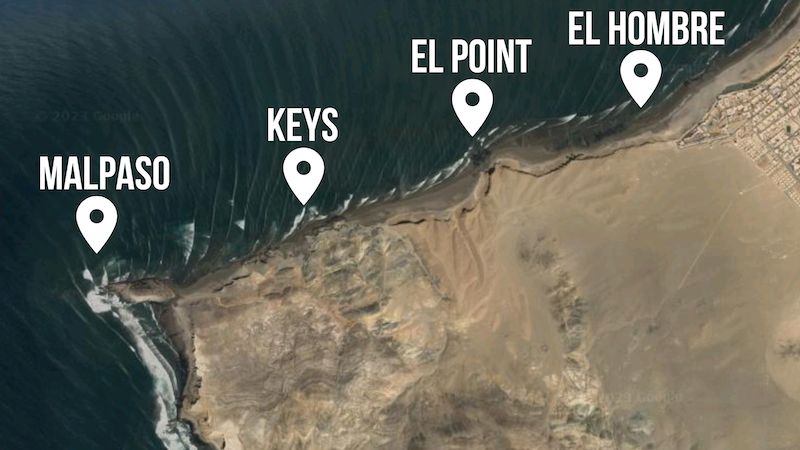
Enjoying this post? You might like my complete guide to surfing in South America or other Latin American surf destinations such as everything you need to know about surfing in Costa Rica, the ultimate guide to surfing in Florianopolis, or the complete guide to surfing in southern Chile.
Where To Stay In Chicama?
- Dorm Price: $170 per night
- Distance from Surf: 10 minute walk
- Wifi: Excellent
- Type: Private Rooms
One of the best, top-quality places to stay and surf in Chicama. Chicama Boutique overlooks the point, boasts a beautiful interior, and provides excellent food. Slightly more expensive than other places in town, but ideal if you’re coming to Chicama with a non-surfing partner.
- Dorm Price: $93 per night
- Distance from Surf: 10 minute walk
- Wifi: Excellent
- Type: Private Rooms
Right on the front overlooking the point, Delfines is a dreamy spot to stay in Chicama, and if you can snag a room in the front, you’ll see the waves from your bed. Not bad, ay? Delfines is another top place to stay in town, and has everything you need for a wicked (and comfortable) surf trip to Chicama!
- Dorm Price: $27 per night
- Distance from Surf: 20 minute walk
- Wifi: Great
- Type: Private Rooms
This is where I stayed for two weeks in Chicama, just one street back from the water in town. Although there’s no sea view, the place is fantastic, with daily cleaning, a super friendly owner, and $17 for a private room with wifi and a hot shower. I highly recommend Hospedaje La Ola Azul if you need somewhere affordable or, if you’re a digital nomad surfer and want to get work done! (Wifi was solid most of the time).
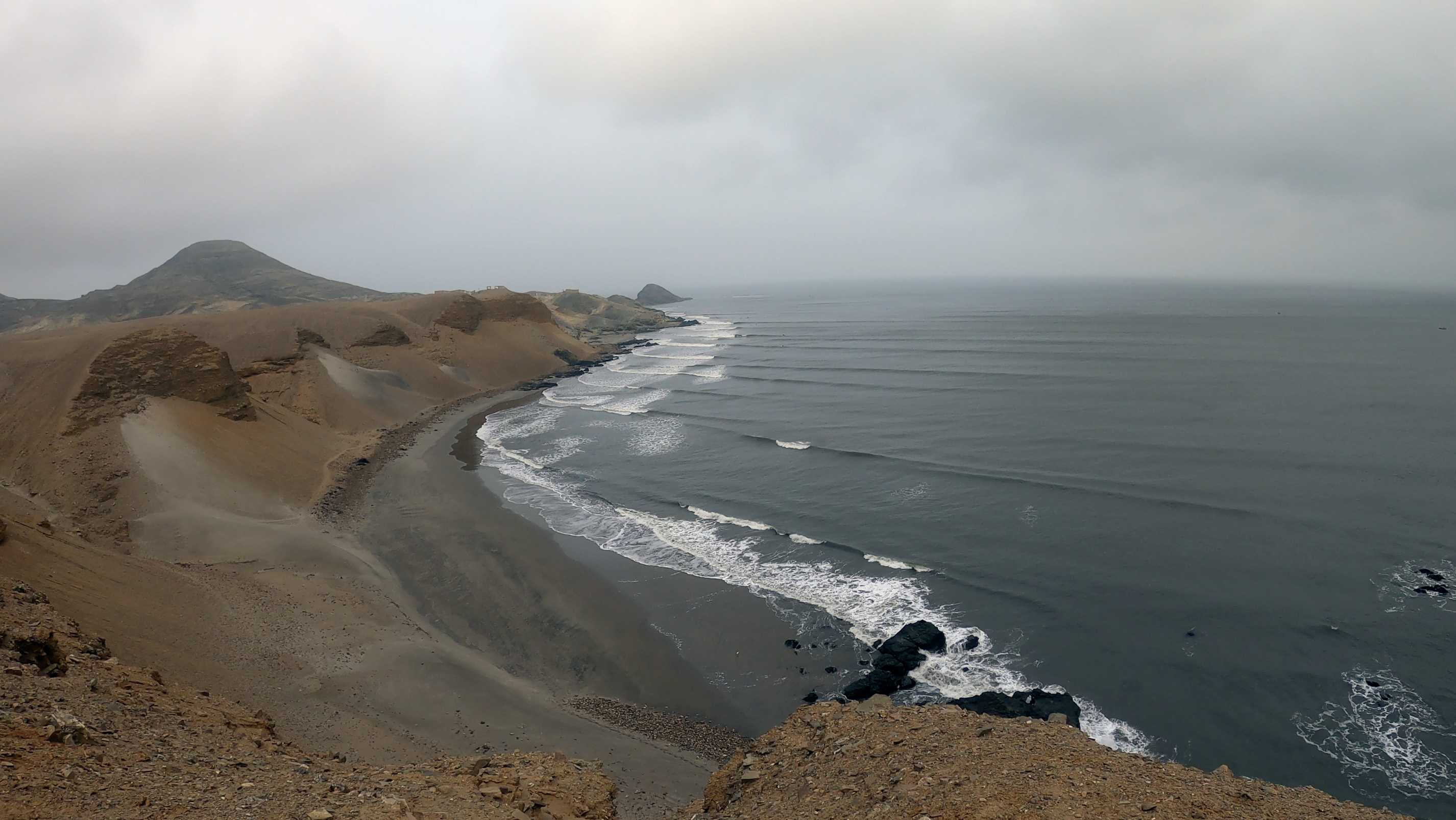
Tips For Surfing Chicama
The Current
One crucial thing to know about Chicama is the current is gnarly. The bigger the swell, the bigger the sweep; when it’s over 4 feet, it’s impossible to paddle against. Thankfully you can just walk back up the point.
If you don’t fancy the runaround, take a boat ride for your entire session with lifts back up the point. I was too tight to splash out on this but watched in envy as boat drivers ferried surfers up the point in front of me. Boats cost around 60Sol ($ 15 USD) for a 3-hour session.
Boats
Getting a boat makes your session way easier. However, I found the drivers drive very close to the waves! This means, that too often, waves are ruined by ribs coming up the face–not ideal after you’ve just done a 1km run around. I know the drivers are picking up their paying surfers, but drivers could at least drop the surfers a little further out!
Rocks On The Inside
There are some sharp rocks on the inside, which isn’t a problem in the lineup; just watch your toes as you get in and out. Where you surf though, is mostly sand and you won’t have any trouble!
Length
If El Point is working, you’ll get stupidly long rides, rides of over 2 minutes long! You’ll have to navigate fast sections, deep spots, and the odd foiler on the shoulder, but unless you’ve been to Skeleton Bay in Namibia, you’ll get the longest waves of your life here.
Boards To Bring
As a devoted shortboarder, I only ride shortboards. However, Chicama is great for any craft. Many longboarders, SUPs, and foilers were getting decent waves during my trip. Although it has fast sections, it’s super easy to surf.
Leg Burners
While it’s a fantastic problem to have, it’s pretty tough to surf (and rip) a wave that you’re riding for two minutes straight! You’ll find that after tearing into a few turns after take off, you’re legs will get tired and you’ll have to trim for a bit until you catch your breath before going again. It also pays to chill on the walk around (it’s a 15-minute walk at least) so walk steady and take deep breaths between each lap!
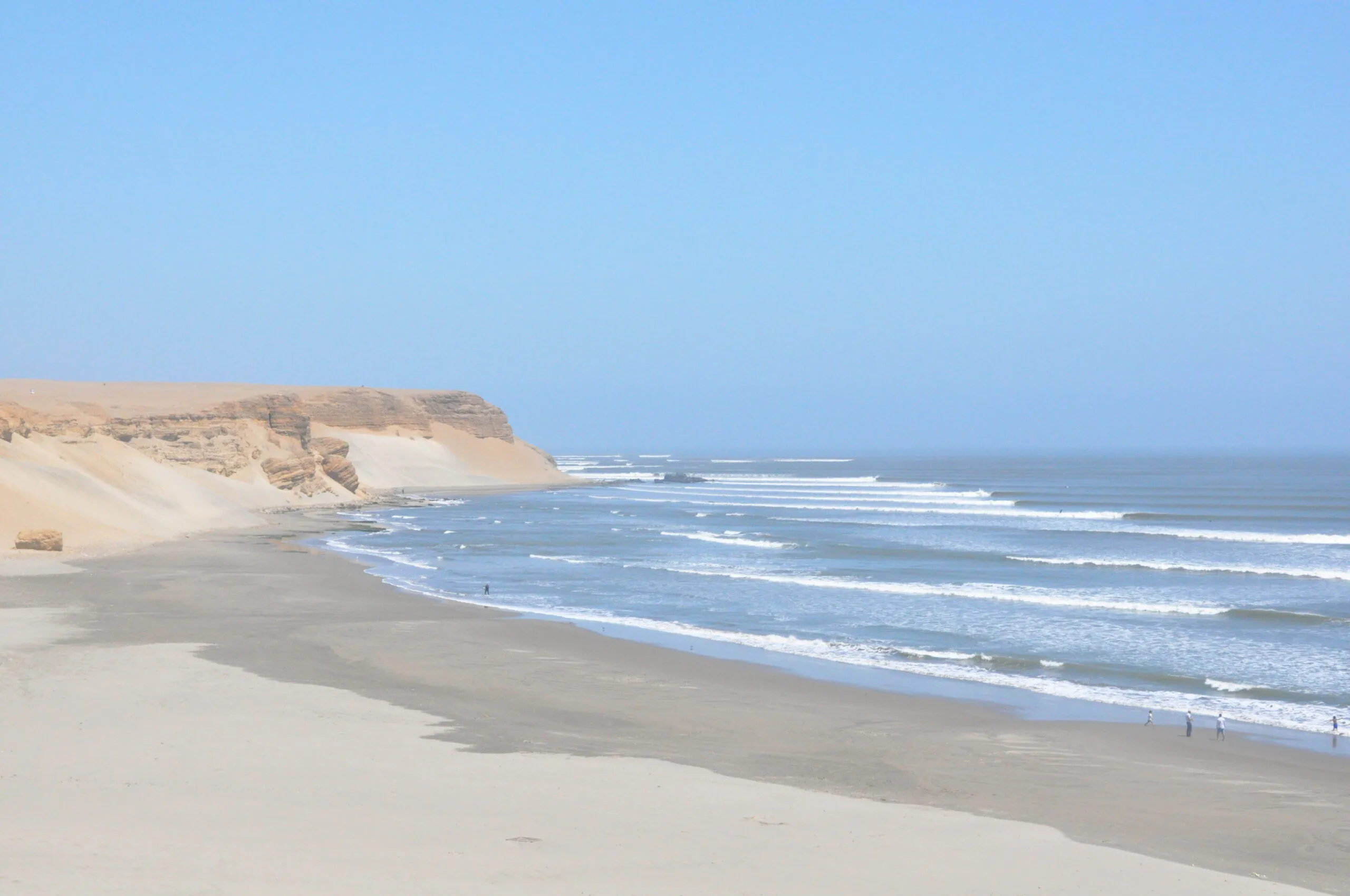
Peru Travel Information
Flight Times:
- LAX – LIM: 8h 35m
- LHR – LIM: 14h 55m+
Visas: 3-month visa on arrival
Currency: Peruvian Sola
Language: Spanish
Health & Safety: No vaccinations required
Plug Sockets: Type A (Two-prong)
Looking for more information on scoring waves in Peru? You might like some of my other content including the complete guide to surfing in Peru, or specific breakdowns of surfing in Lobitos or Lima.
What's the Town Like?
Aesthetically, the town of Chicama (Puerto Malabrigo) is pretty bleak and run down. However one of the main reasons for this is that many Peruvians leave their homes unpainted to save on tax, so all the buildings are bare brick and look unfinished.
In Town, there are a handful of bars, restaurants, and cafes and people are friendly and welcoming. You will need to speak a little Spanish though and a few basic phrases will go a long way.
Chicama - Cost Breakdown
As a rough guide, here’s a breakdown of a 1-week surf trip to Chicama…
- Bus from Trujillo to Chicama $20
- 7 nights at Hospedaje la ola Azul $140
- Boat ride to the Point $30
- 7 Days food (Eating at Local Restaurants) $105
One week total = $295
Non-surfing Activities in Chicama?
There is not much else to do besides surfing in Chicama. It’s a place you go to experience one of the longest waves in the world and focus solely on surfing. But if you’re incorporating Chicama and the rest of Peru into a larger South America surf trip, you’ll have plenty of opportunity to for non-surf related tourist sites!
Across Peru, there are so many incredible things to do, but in Chicama, you come here for one thing, and one thing only–to score the longest lefts of your life! After you’ve had your surf fix, I’d highly recommend hiking Laguna 69 or venturing down to Machu Picchu.
Final Words
While the waves in Chicama may not offer tubes and the power of other waves in Peru or South America, come here in winter and get some of the longest, most user-friendly waves you’ll experience anywhere on the planet.
Chicama is affordable and super easy to hang out in (once you’ve got there), and there are great places to stay. If you’re already in Peru, I’d recommend surfing Chicama for a fix of long, forgiving waves. You won’t regret it. If you want to take a deeper dive into Chicama, check out my recent book, The Latin American Surf Tales.
Chicama FAQs
Yes, beginners can surf in Chicama. While on a small day, a beginner surfer could head out at the point, the beach break in town is suitable for beginners.
Yes. You will need to wear 3-2mm wetsuit in Chicama.
The water temp hovers around 18c in Chicama, so you’ll need a 3/2 in winter.
